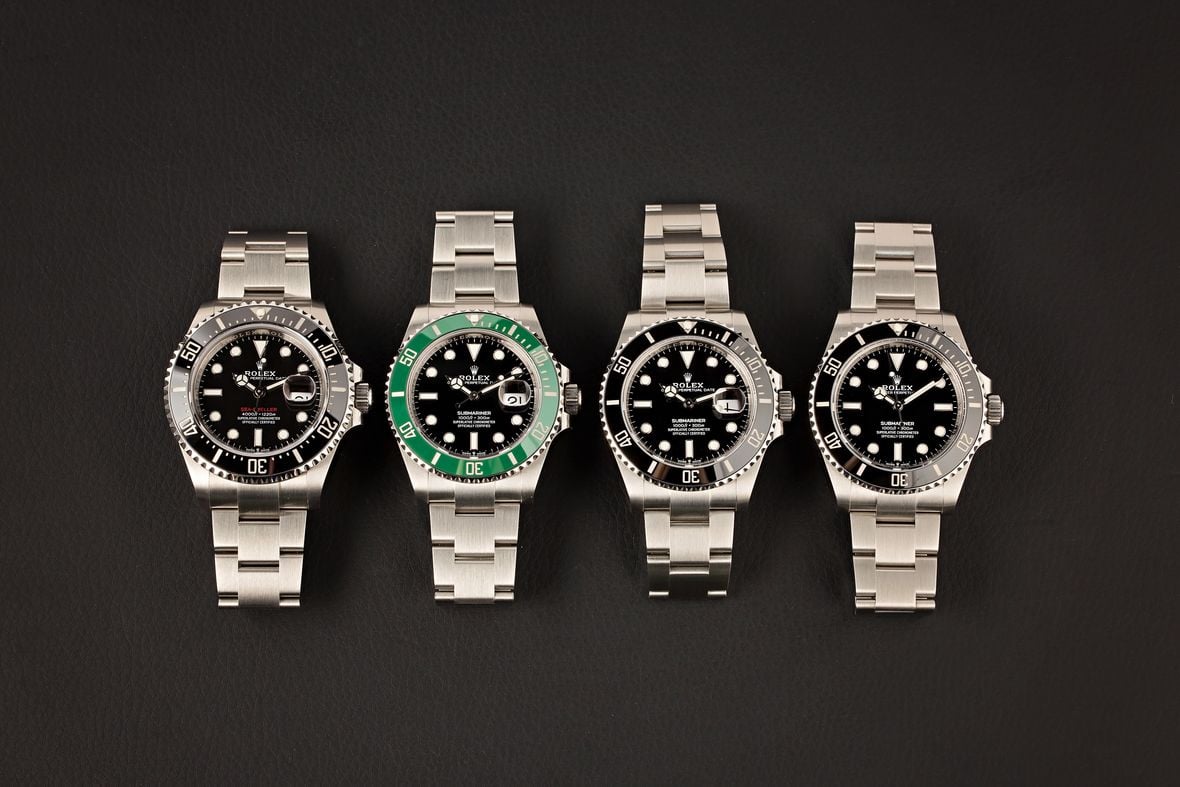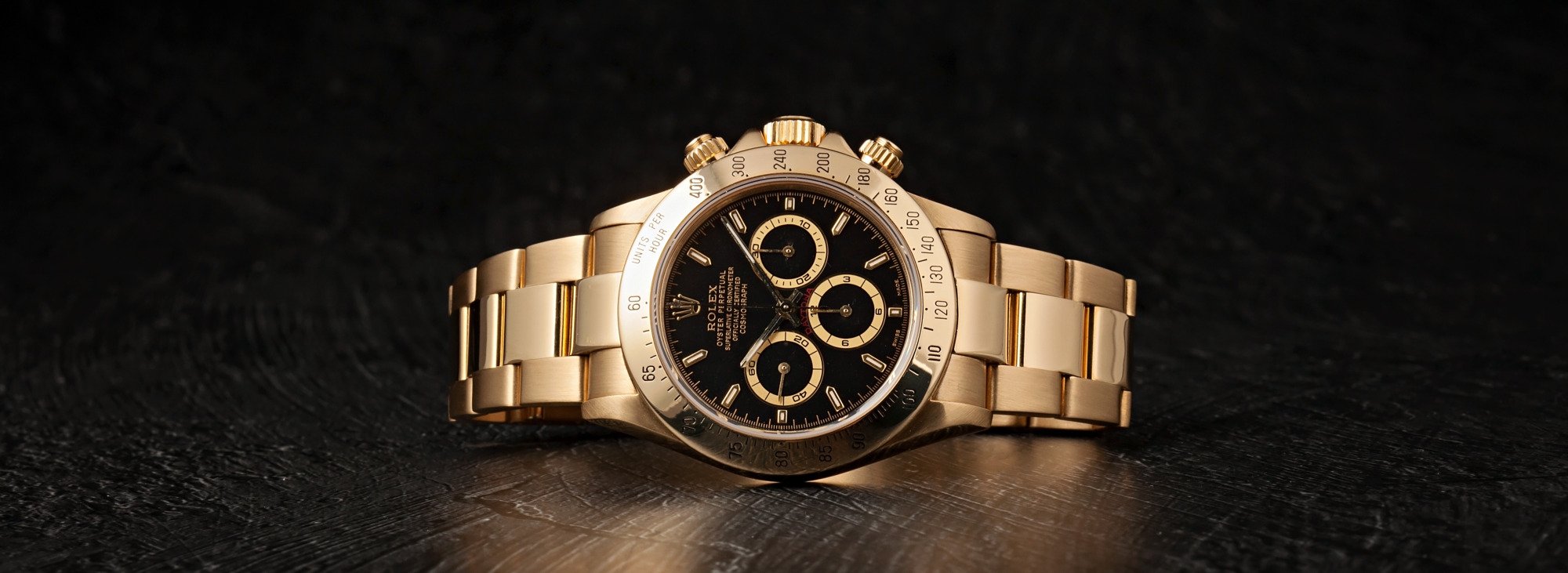Rolex’s position as the undisputed leader in luxury watchmaking is built on two key factors: the timeless designs of its core offerings and the exceptional versatility of its entire product range. This is particularly evident when comparing the Rolex Sea-Dweller vs Rolex Submariner, two iconic dive watches that showcase the brand’s commitment to creating timepieces that excel in both form and function. Nearly every model in the Rolex brand’s watch portfolio, including the Sea-Dweller and Submariner, can effortlessly serve dual purposes – robust and capable enough to be your daily companion, yet stylish and refined enough to be worn with any attire.
This versatility is exemplified by the brand’s dive watches. The Submariner, introduced in 1953, has become an icon in the world of horology. Its successor, the Sea-Dweller, launched in 1967, was designed for professional divers and offered even greater water resistance. The Rolex Sea-Dweller Deepsea, released in 2008, pushes the boundaries of dive watch capabilities even further. These three models embody the ‘one watch for any occasion’ philosophy. While the Deepsea might be a bit too substantial to slip under a tailored shirt cuff at the most formal events, the Rolex Submariner vs Sea-Dweller comparison shows that both have mastered the art of minimalist elegance, ensuring they never look out of place.
But what sets the Submariner and Sea-Dweller apart? At first glance, they may appear nearly identical, and they do indeed share many of the same qualities, such as the Oyster case, the unidirectional rotating bezel, and the Triplock crown. However, each watch has its own unique strengths and characteristics, such as the Sea-Dweller’s helium escape valve and its greater water resistance (1,220 meters compared to the Submariner’s 300 meters). These distinctions make a meaningful Rolex Sea-Dweller vs Submariner comparison worthwhile.
In this article, we will explore everything you need to know about two of the finest dive watches in the industry: the Rolex Submariner and the Rolex Sea-Dweller. We’ll delve into their histories, their features, and their differences, providing you with the information you need to appreciate these horological masterpieces and perhaps even choose between them in the Sea-Dweller Rolex vs Submariner debate.
Rolex Sea-Dweller
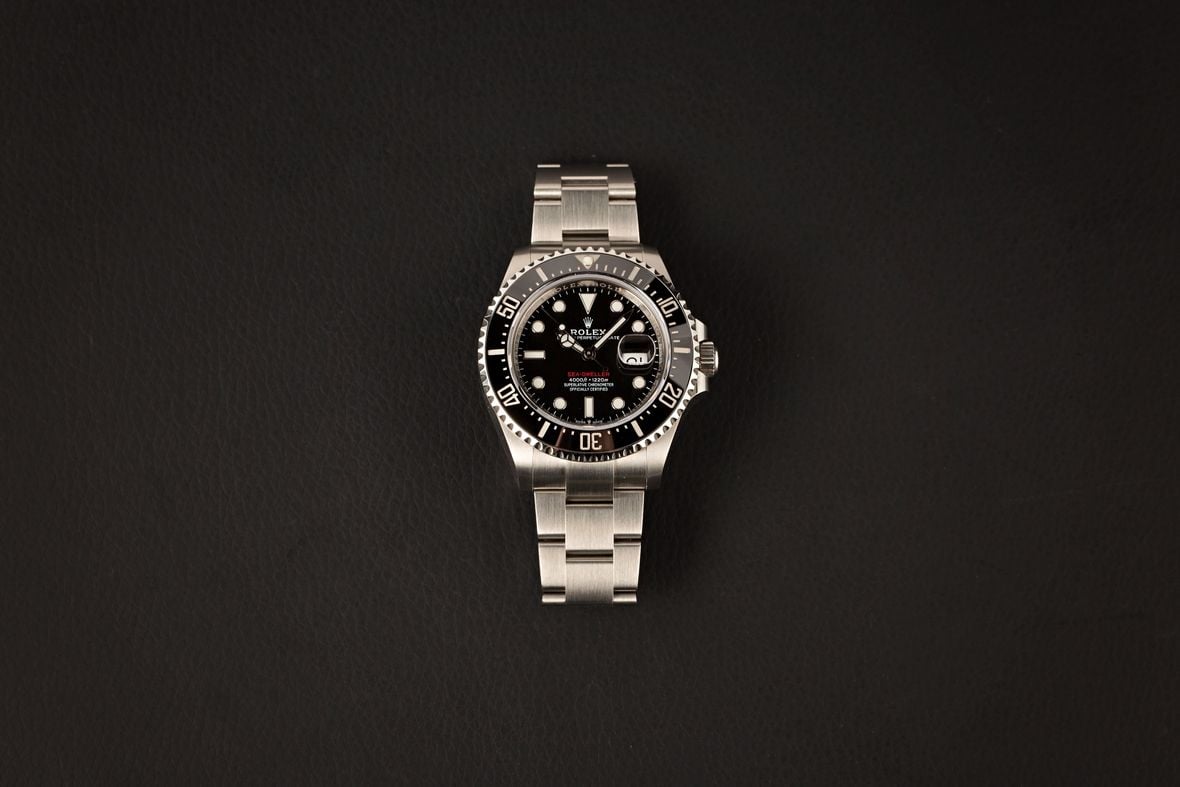
Sea-Dweller Key Features:
Case Size: 43mm
Materials: Stainless Steel, Yellow Rolesor
Functions: Time w/Running Seconds. Date Display
Dial: Black with Chromalight Hour Markers
Bezel: Unidirectional, Black Cerachrom w/ 60-Minute Scale
Crystal: Sapphire w/Cyclops
Water Resistance: 1,220 Meters / 4,000 Feet
Movement: Caliber 3235
Bracelet: Oyster Bracelet
For more information on the Sea-Dweller and its sub models explore the differences between the Deepsea and the Rolex Sea-Dweller.
Rolex Submariner
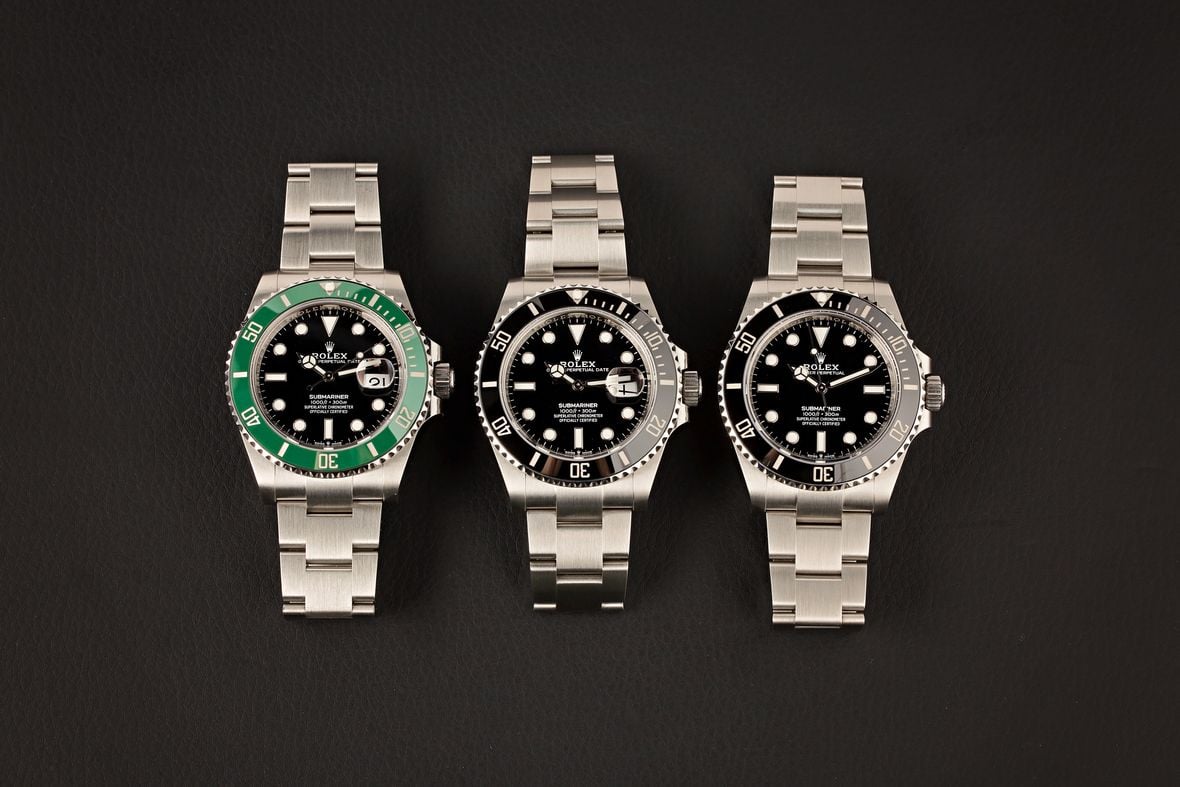
Submariner Key Features:
Case Size: 41mm
Materials: Stainless Steel, Yellow Rolesor, 18k Yellow Gold, 18k White Gold
Functions: Time w/Running Seconds, Date Display
Dial: Black or Blue with Chromalight Hour Markers
Bezel: Unidirectional, Black/Blue/Green Cerachrom w/ 60-Minute Scale
Crystal: Sapphire w/Cyclops on Date Models
Water Resistance: 300 Meters / 1,000 Feet
Movement: Caliber 3235
Bracelet: Oyster Bracelet
For more information on the Rolex Submariner models explore our ultimate buying guide on the Rolex Submariner.
The History of the Rolex Submariner and Sea-Dweller
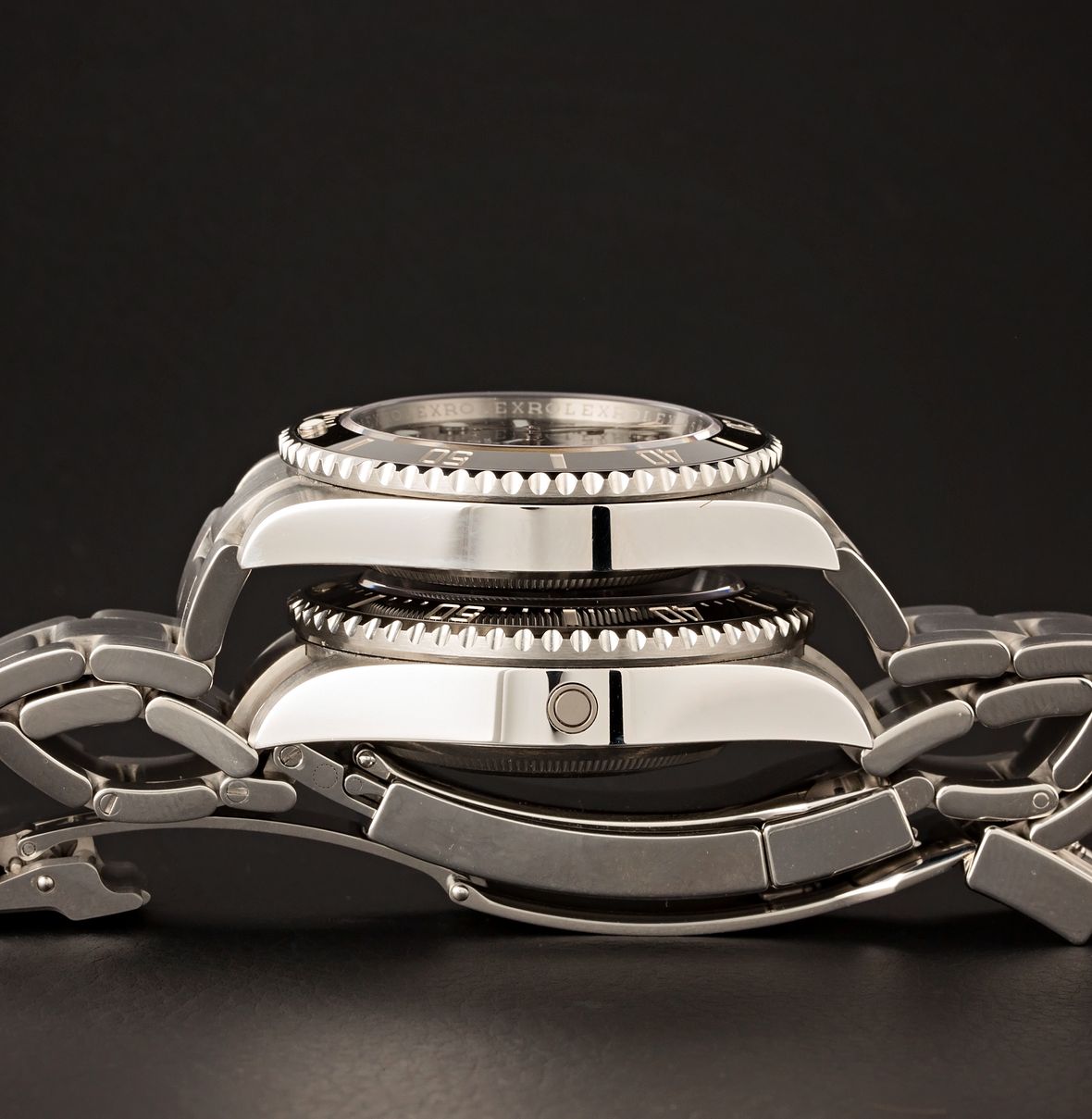
As Rolex’s two premier dive watch collections, the Submariner and the Sea-Dweller have intertwined histories. However, the Sea-Dweller has always been positioned as the more advanced and capable model between these two professional dive watches, catering to the needs of saturation divers and offering greater water resistance.
Rolex Submariner History
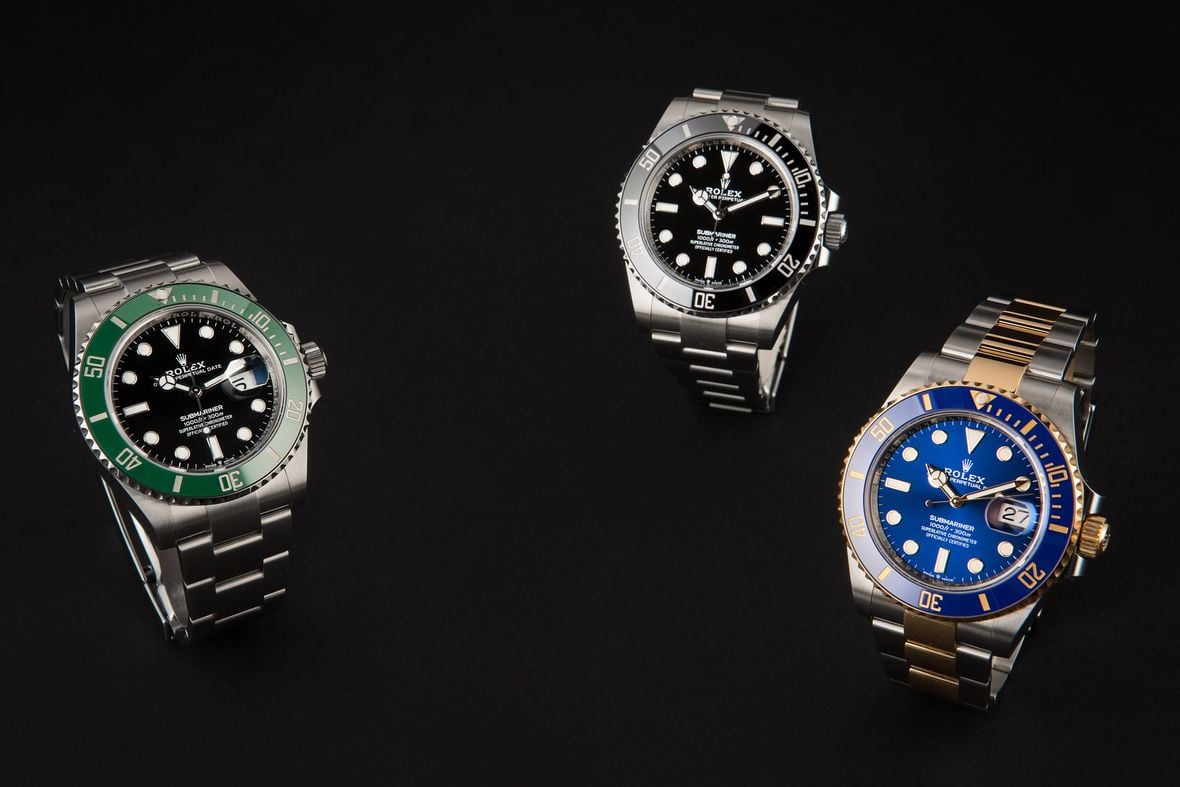
The Submariner’s story began in 1953, created to cater to the growing popularity of scuba diving, which was fueled by the invention of the Aqualung by famed underwater explorer Jacques Cousteau. Rolex board member Rene-Paul Jeanneret collaborated with Cousteau to develop a watch that would serve the needs of divers, resulting in the first Submariner, a stainless-steel model with a high-contrast white-on-black dial and a bidirectional rotating bezel, housed in a 38mm Oyster case. To ensure its unprecedented 100-meter water resistance, Rolex introduced the Twinlock system, which featured a pair of O-ring gaskets to create two internal sealed zones, protecting the mechanism from moisture intrusion.
After several years of refinements, the enduring blueprint for the Submariner arrived with the Submariner reference 5512 in 1959. At 40mm in diameter, with a reworked bezel design for easy manipulation and crown guards to protect the winding crown, the fundamental shape of the Submariner remained largely unchanged for the next half-century.
The Submariner’s popularity soared in the 1960s, thanks in part to its appearance on Sean Connery’s wrist in several James Bond films, starting with Dr. No. Over the years, Rolex has continuously upgraded and improved the Submariner, introducing a date function (Submariner reference 1680), increasing its water resistance to 300 meters, and offering the watch in a variety of colors and materials, including solid gold (ref. 1680/8) and gemstone-adorned versions.
Rolex has also made significant improvements to the Submariner’s movement over the years. In 1988, the Submariner received the caliber 3135, which featured a larger balance wheel and a Breguet overcoil hairspring for improved accuracy and shock resistance. More recently, in 2020, Rolex introduced the caliber 3235, which boasts a 70-hour power reserve and Rolex’s proprietary Chronergy escapement for even greater precision and reliability.
The latest iteration of the Submariner, released in 2020, saw an increase in size to 41mm, a testament to Rolex’s commitment to refining and improving this iconic timepiece. Nearly 70 years after its introduction, the Rolex Submariner remains the benchmark for luxury dive watches, endlessly emulated but never surpassed. It is the quintessential icon of the horological world, a symbol of adventure, elegance, and timeless design.
Rolex Sea-Dweller History
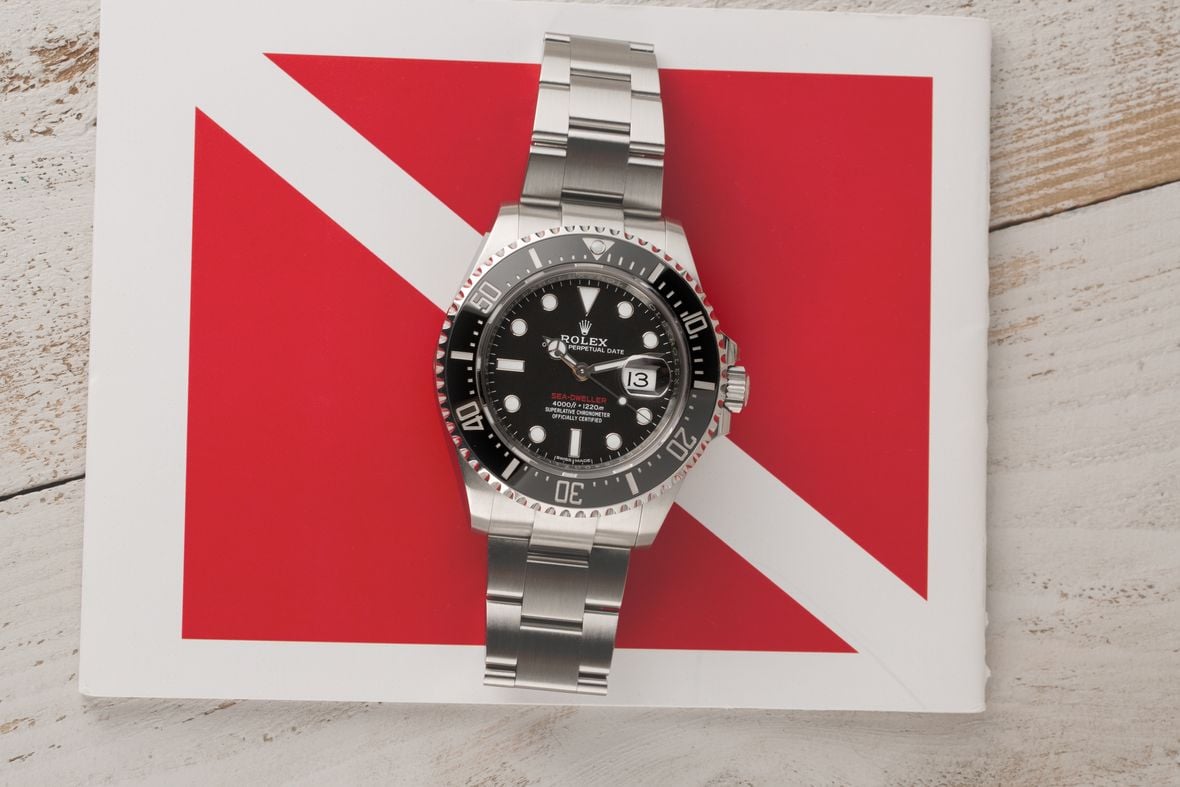
The Rolex Sea-Dweller’s history mirrors that of the GMT-Master watch line, born from a collaboration between Rolex and a professional organization in need of a timepiece capable of performing a specific task. While Pan Am Airlines contributed their expertise to the GMT-Master’s development, the Sea-Dweller’s genesis involved French commercial diving specialists, COMEX.
Throughout the 1960s, as offshore oil exploration expanded, saturation divers were required to work at tremendous depths, often living in dry habitats for weeks at a time. Due to the immense pressures and nitrogen’s narcotic effects at these depths, divers breathed a gas mixture in which helium replaced the nitrogen in the air.
The challenge COMEX divers faced with their watches occurred during the ascent back to the surface. Helium molecules, being among the smallest of all natural gases, could seep past the seals of even Rolex’s renowned Oyster cases. As the diver returned to sea level, the trapped helium would expand, potentially blowing the crystal off the watch’s face.
COMEX needed a solution that would allow the gas to escape safely, and they turned to Rolex for assistance. Rolex collaborated with fellow Swiss brand Doxa to invent the HEV, or Helium Escape Valve. The HEV is a small, spring-loaded one-way regulator set into the case at nine o’clock, which opens when the pressure inside the watch is greater than the ambient pressure, allowing the helium to escape safely. This enables the watch and diver to decompress simultaneously.
The first prototypes were retrofitted to a reference 5513 Submariner and underwent extensive, successful field testing. In 1967, Rolex unveiled the purpose-built Sea-Dweller. While visually similar to the Submariner, the Rolex Sea Dweller reference 1665 (known by collectors as the “Double Red” or “Great White” depending on the era and color of dial text) featured a significantly thicker case and crystal. It also introduced the next generation of Rolex’s winding crown system, the Triplock, which featured three sealed zones for enhanced water resistance. These innovations gave the Sea-Dweller an impressive waterproof rating of 2,000 feet (610 meters).
Diverging Paths: Submariner and Sea-Dweller
Although the Sea-Dweller shared the Submariner’s aesthetics – no-nonsense minimalism designed for perfect legibility – the two watches have progressed in very different ways. By the late 1960s, the Submariner had evolved into more of a status symbol than the proper tool watch it once was. The addition of a date display and its controversial Cyclops magnification lens, along with Rolex’s decision to release the watch in solid 18k yellow gold and Rolesor (two-tone steel and gold) editions, solidified this shift.
The Sea-Dweller, on the other hand, took over as Rolex’s true professional dive watch. Larger and heavier, it remained a steel-only creation for most of its run. While it also featured a date function, there was no magnifying lens to unbalance the dial. By the end of the 1970s, the Sea-Dweller had doubled its depth rating to 4,000 feet (1,220 meters), making it one of the most capable divers on the market. More importantly, it retained the essence of the “old” Rolex: a manufacturer of watches designed to accompany the fearless on real adventures.
The Sea-Dweller’s Evolution
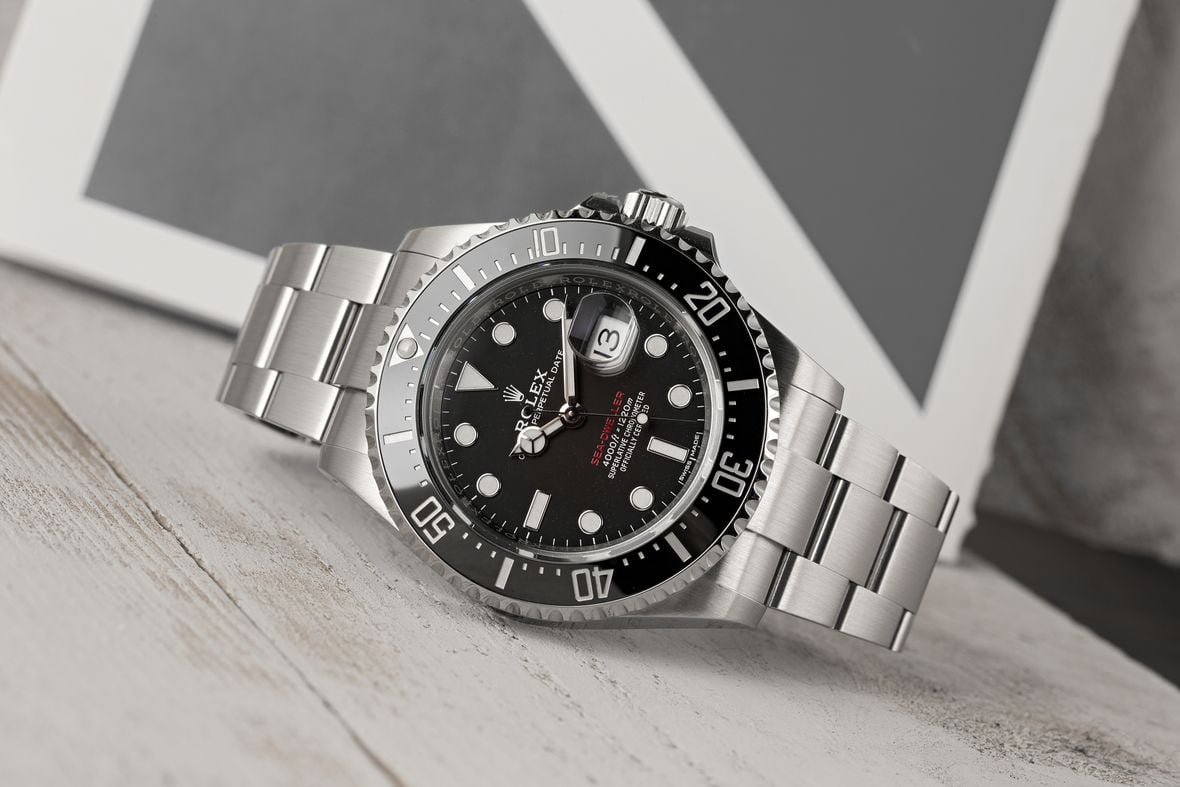
In a rare misjudgment of the market, Rolex discontinued the Sea-Dweller in 2008 to make way for the Deepsea – an engineering marvel capable of withstanding 12,800 feet (3,900 meters) of underwater pressure. Fortunately, the Sea-Dweller was reintroduced in 2014 with the Sea Dweller reference 116600, the first to feature a Cerachrom bezel on its redesigned Maxi case.
Rolex marked the Sea-Dweller’s 50th anniversary in 2017 with a significant update, increasing the model’s dimensions to 43mm on the Rolex reference 126600. While the larger size helped differentiate the watch from the Submariner, the new version also received a Cyclops lens, much to the dismay of many purists. Opinions were further divided with the introduction of the Sea-Dweller reference 126603 in 2019 – the first two-tone Sea-Dweller, potentially signaling a more corporate role for the once king of the oceans.
Although the addition of 18k gold may have softened the Sea-Dweller’s edge, the combination of elegant styling and robust capabilities could arguably make it the best all-around luxury dive watch available today.
Choosing Between the Submariner and Sea-Dweller
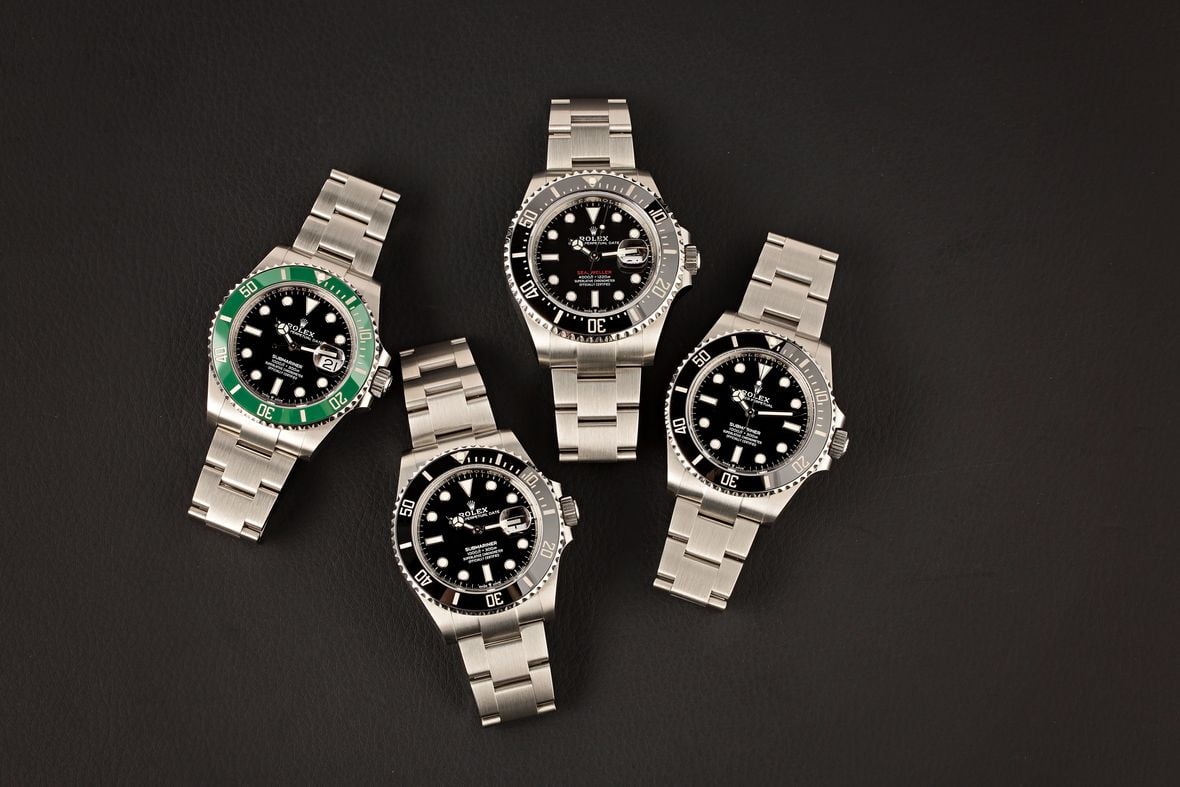
With both the Submariner and Sea-Dweller offering unique attributes and histories, the choice between them ultimately comes down to personal preference and intended use. Let’s explore which Rolex dive watch might be the right choice for you.
Rolex Submariner Vs. Rolex Sea-Dweller: Looks
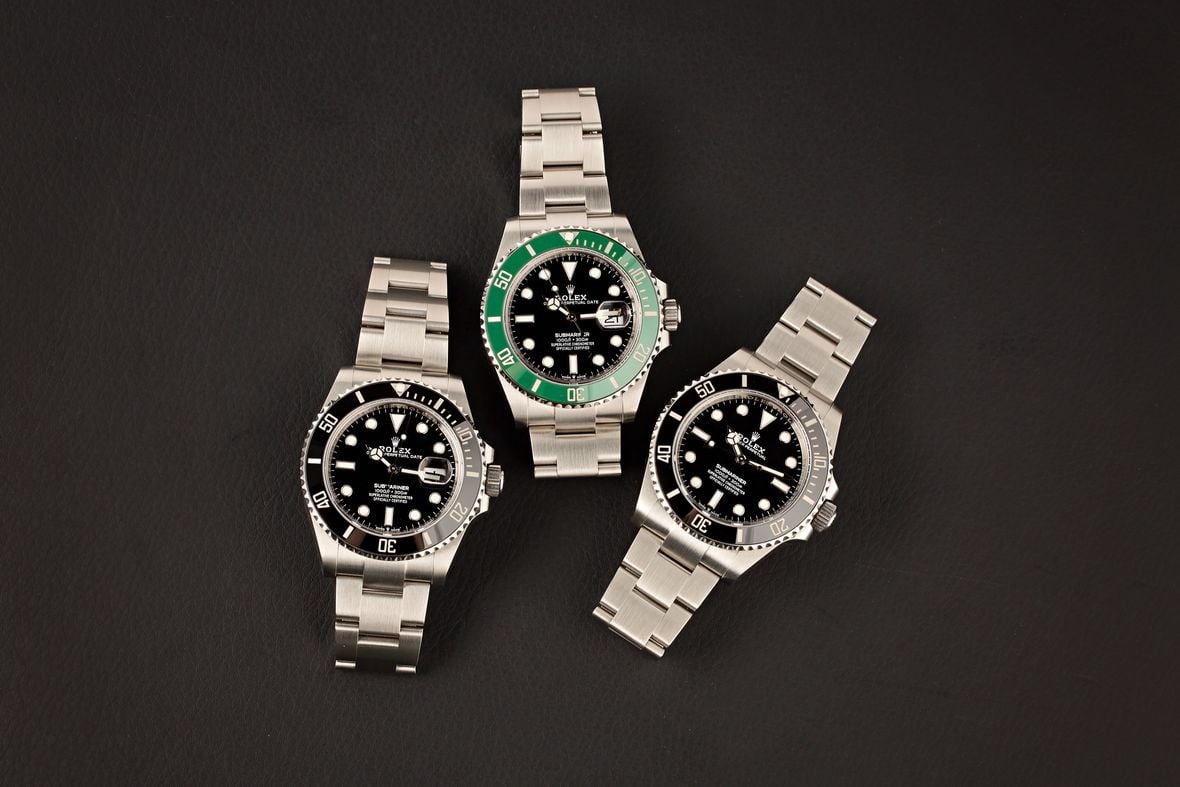
When Rolex released the first Submariner, it set the standard for what a dive watch should look like, with only a few exceptions. The basic formula was so well-defined that Rolex saw no need to alter it significantly when creating the Sea-Dweller, leading to the ongoing Rolex Sea-Dweller vs Submariner debate.
Both watches appear remarkably similar, and their sizes are converging with the release of the current Submariner. The difference between the current Sea-Dweller and the previous generation Submariner has decreased from 3mm to 2mm, with the pair measuring 43mm and 41mm, respectively.
When comparing like-for-like models (steel vs. steel or Rolesor vs. Rolesor, all with black dials and bezels), it’s challenging to distinguish them. However, there are subtle differences. The Sea-Dweller’s bezel features minute markings all the way around, while the Submariner’s markings stop after the first 15 minutes. This is to facilitate accurate timing of decompression stops, as Sea-Dweller wearers are likely to dive deeper and require longer decompression periods.
Additionally, Rolex has varied the text color on the Sea-Dweller. The two-tone model features its name in gold to match the bezel numerals, while the standard version has red text as a tribute to the original Double Red Sea-Dweller (DRSD). On the Submariner, all text is now white.
The most noticeable difference between the two models becomes apparent when worn. At approximately 15.25mm (excluding the Cyclops lens), the Sea-Dweller is slightly thicker than the Submariner, as well as being 2mm larger in diameter.
Both watches epitomize the archetypal dive watch design, which is so deeply ingrained in our minds that it’s often the first image conjured when thinking of a dive watch. You can’t go wrong with either choice.
Rolex Submariner Vs. Rolex Sea-Dweller: Options
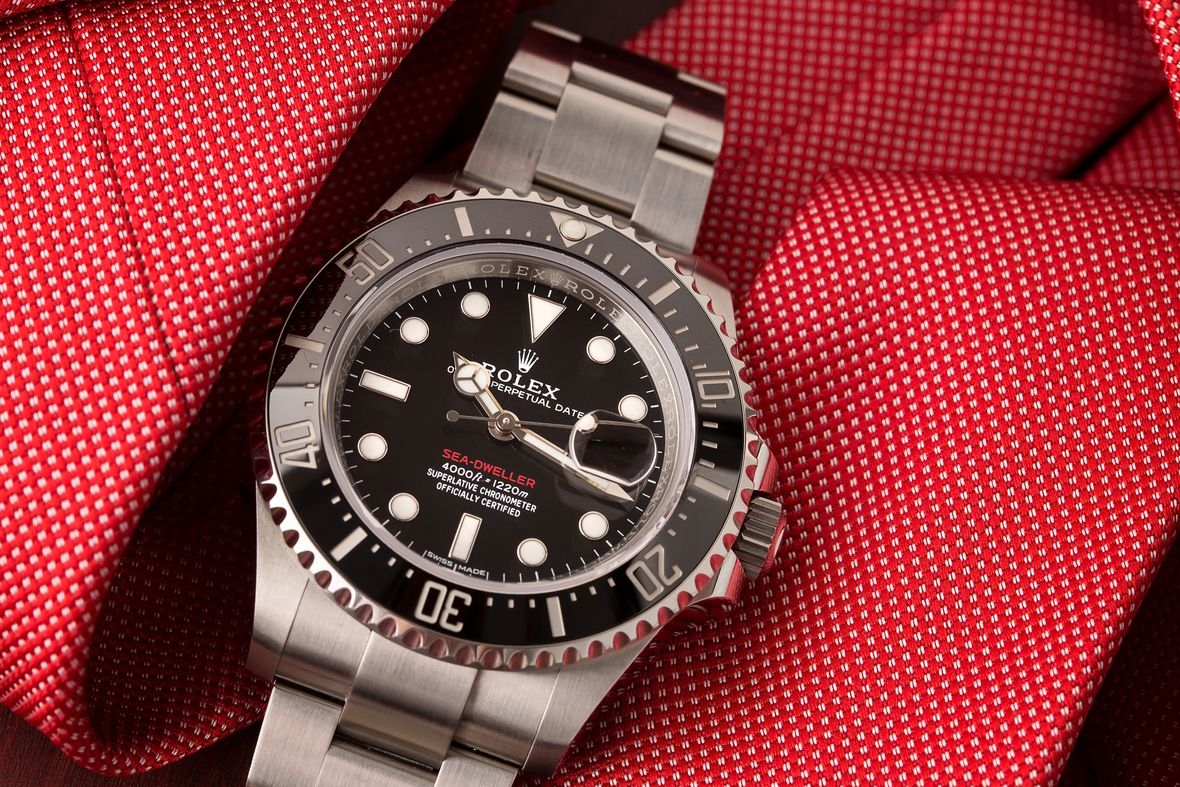
Initially, both watches were exclusively made from stainless-steel, befitting their tool-watch nature. This changed for the Submariner in the late 1960s with the introduction of reference 1680/8, the first Sub crafted in 18k yellow gold. A two-tone Rolesor edition followed soon after, and both were available with blue or black dials and bezels. Modern versions of these options are still part of the current lineup.
The contemporary Submariner collection also includes a solid 18k white gold model with a blue Cerachrom bezel (ref. 126619LB) and three stainless steel variations: a standard black dial and bezel (ref. 126610LN), a black dial with a green bezel (ref. 126610LV), also known as the Submariner “Starbucks” and its predecessor the “Kermit”, and the no-date reference 124060. The Submariner No-Date has always been exclusively available in stainless steel, while the date-displaying models are offered in various precious metal options.
The Sea-Dweller, as the more serious tool watch, was only available in stainless steel from its inception in 1967 until 2019, when the two-tone Rolesor reference 126603 was introduced. These are the only two options available today, with no color variations like its sibling. Regardless of metal type, both Sea-Dweller references feature black dials and bezels.
Rolex manufactures all its metals in-house, including 18k gold and its proprietary stainless-steel alloy, Oystersteel. Part of the 904L family, Oystersteel is particularly resistant to corrosion from seawater, making it ideal for dive watches.
The ceramic bezels, made from Rolex’s Cerachrom material, are scratchproof, fade-proof, and impervious to corrosion. The numerals are coated in either platinum or 18k gold via a PVD process to maintain their luster over time.
On the dial, the hour markers and Mercedes hands are outlined in white gold to prevent tarnishing. Any modern Submariner or Sea-Dweller purchased today should maintain its new appearance indefinitely, with the only exceptions being scratches or scuffs to the metal itself.
Rolex Submariner Vs. Rolex Sea-Dweller: Features
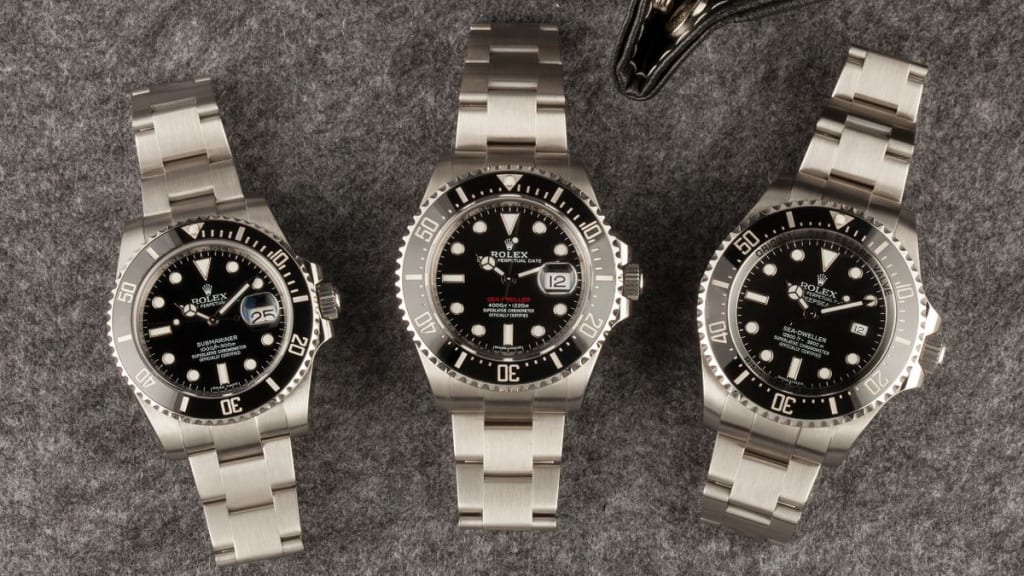
At their core, both the Submariner and Sea-Dweller are relatively simple time-and-date watches (with the exception of the no-date Sub). The main difference lies in the depth at which each will continue to function underwater.
The Submariner, designed for recreational diving, boasts a 300m water resistance, which is more than sufficient for most wearers. The inherent sturdiness required to achieve this rating ensures it is impervious to water during all daily activities.
The Sea-Dweller, on the other hand, is in a league of its own. Conceived in an era before dive computers, when a reliable watch could be a matter of life and death for saturation divers, it is built to function at depths of 1,220m (4,000ft). It can withstand immense pressure, approximately 1,800 PSI, a testament to the engineering prowess required to achieve such performance in a modestly sized watch. The Sea-Dweller also features a Helium Escape Valve (HEV), which is essential for saturation divers but unlikely to be used by most wearers.
Another distinction between the two models is the bracelet. Both come standard with Rolex’s three-link Oyster bracelet, but the Submariner has a 21mm lug width on the newest model, while the Sea-Dweller’s is 22mm. Both feature the Glidelock system, allowing for approximately 20mm of extension in 2mm increments.
However, the stainless-steel Sea-Dweller also includes a Fliplock extension, providing an additional 26mm to accommodate a drysuit or thick wetsuit sleeve. The Rolesor Sea-Dweller, intended as a more luxury-oriented option, lacks the Fliplock extension.
Ultimately, the respective capabilities of these watches may be academic in your choice, as both far exceed the demands of most users.
Rolex Submariner Vs. Rolex Sea-Dweller: Movements
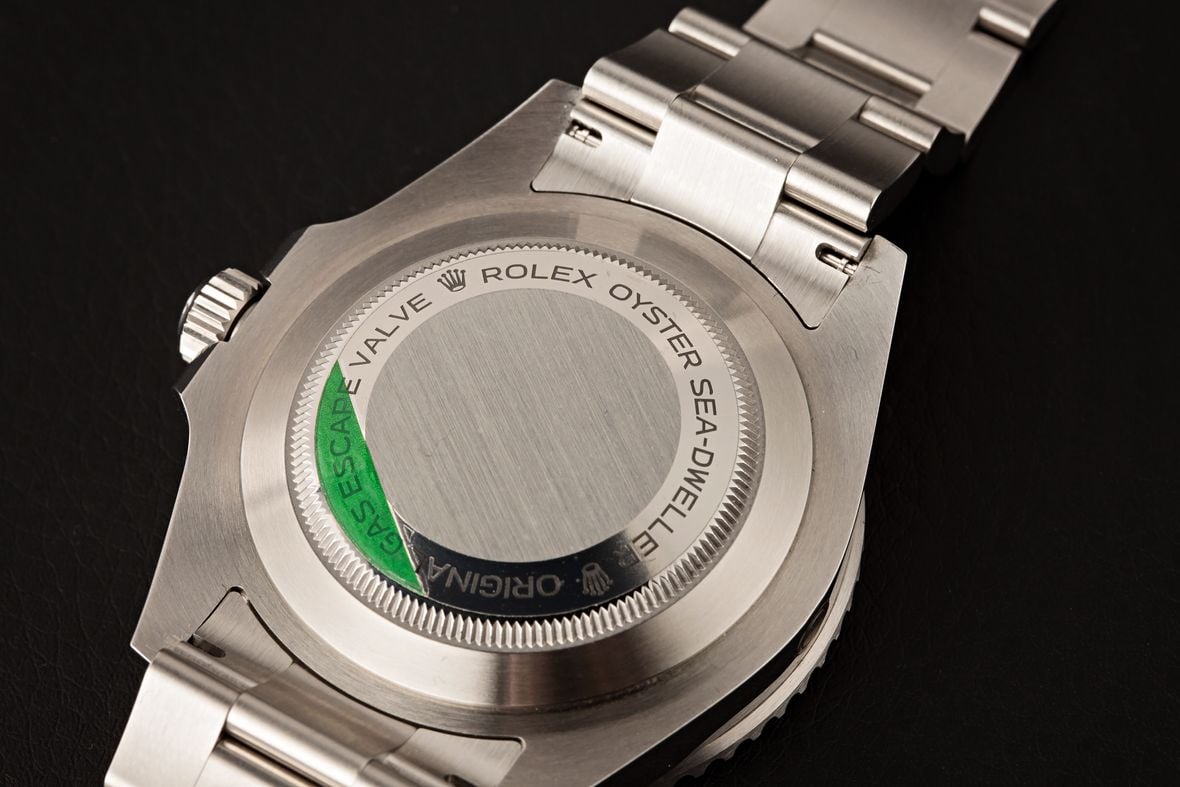
Rolex has finally equipped the Submariner with the same next-generation movement that has been powering the current Sea-Dweller since 2017. The Caliber 3235, which replaces the legendary Caliber 3135, now sits inside both models.
The new mechanism is more than just an update, with around 90% of the Cal. 3135’s components replaced or renewed, including the groundbreaking Chronergy escapement. The Cal. 3235 adheres to Rolex’s philosophy of achieving maximum efficiency with the fewest number of parts to minimize potential issues. The movement’s large size also contributes to its inherent strength.
Like all Rolex movements, the Caliber 3235 is subject to the brand’s stringent accuracy standard, the Superlative Chronometer certificate. This guarantees a timekeeping accuracy of -2/+2 seconds per day, tested across seven positions before and after casing. The Cal. 3235 also boasts a significantly increased power reserve of 70 hours, compared to its predecessor’s 48 hours, while maintaining the same 28,800vph frequency as the rest of Rolex’s lineup.
The outgoing Cal. 3135 was considered one of the best mass-produced movements of all time, and there’s no reason to believe the Cal. 3235 will be any different. While it may not feature the exquisite finishing of some rival manufactures, Rolex has never focused on this aspect. Instead, the brand prioritizes all-around reliability and exceptional precision, which are unmatched at this price point. Additionally, Rolex offers an industry-leading five-year warranty on all its watches since 2015.
Rolex Submariner Vs. Rolex Sea-Dweller: Pricing
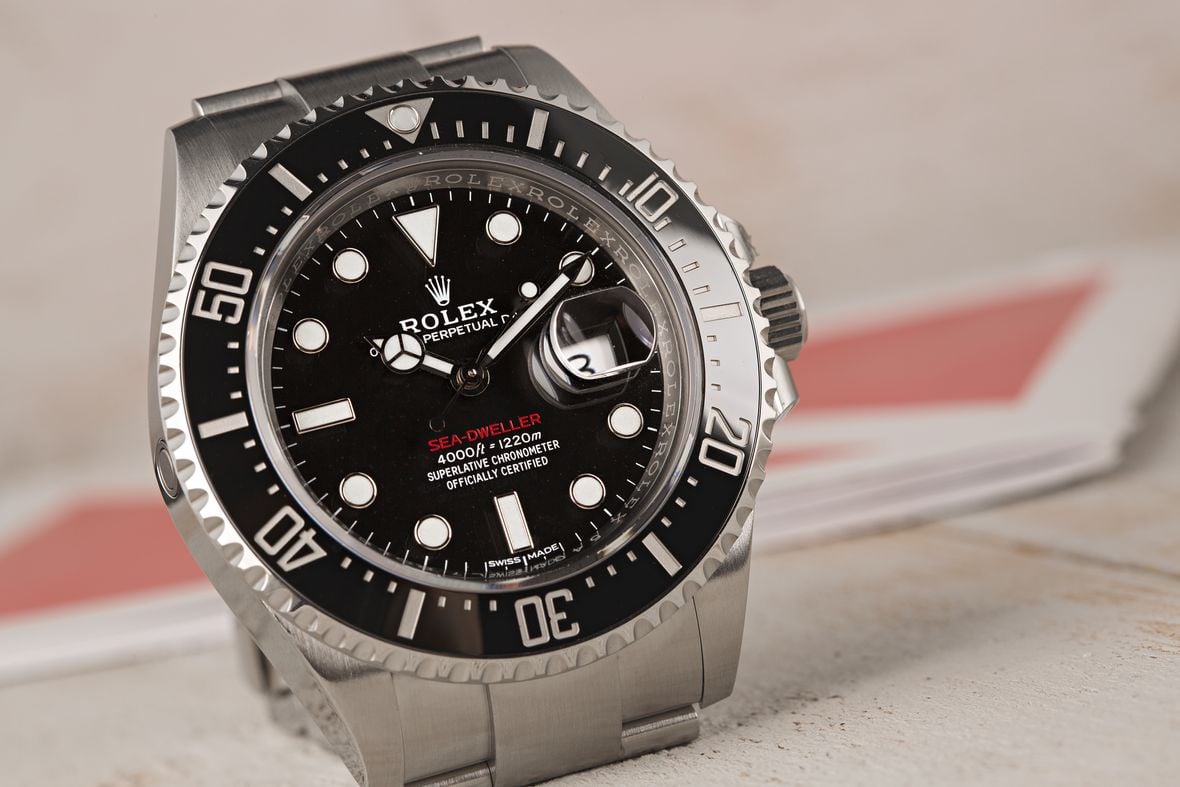
The retail price for a brand-new stainless-steel Submariner with a black dial and bezel is $10,250 ($9,100 for the no-date model), while the green bezel version costs $10,800. The Rolesor models (black or blue dial and bezel) are priced at $15,600, and the solid 18k gold models cost $39,000 and $42,000 for yellow and white gold, respectively. For a comprehensive overview of the Submariner’s pricing, check out our Rolex Submariner price guide.
The standard stainless-steel Rolex Sea-Dweller currently retails for $13,250, and the two-tone version costs $18,000. However, acquiring either of these watches at a Rolex retailer is not as simple as walking in and making a purchase. There are waiting lists to navigate, unless you have a long-standing relationship with your local retailer, which typically involves having spent a significant amount of money with them in the past.
On the pre-owned market, the Sea-Dweller, having been available for a few years, now has a pre-owned price (albeit still higher than retail) that is more or less on par with the recently launched Submariner. Stainless steel examples of both the Sea-Dweller and the Submariner start around the $10,000-$15,000 range.
There’s a slightly more noticeable difference between the Rolesor models, with the Submariner (ref. 126613) priced at approximately $17,500 and the Sea-Dweller (ref. 126603) at around $17,000. However, just like their respective depth ratings, the price difference is likely to be inconsequential in most people’s decision-making process.
Rolex Submariner Vs. Rolex Sea-Dweller: Which One?
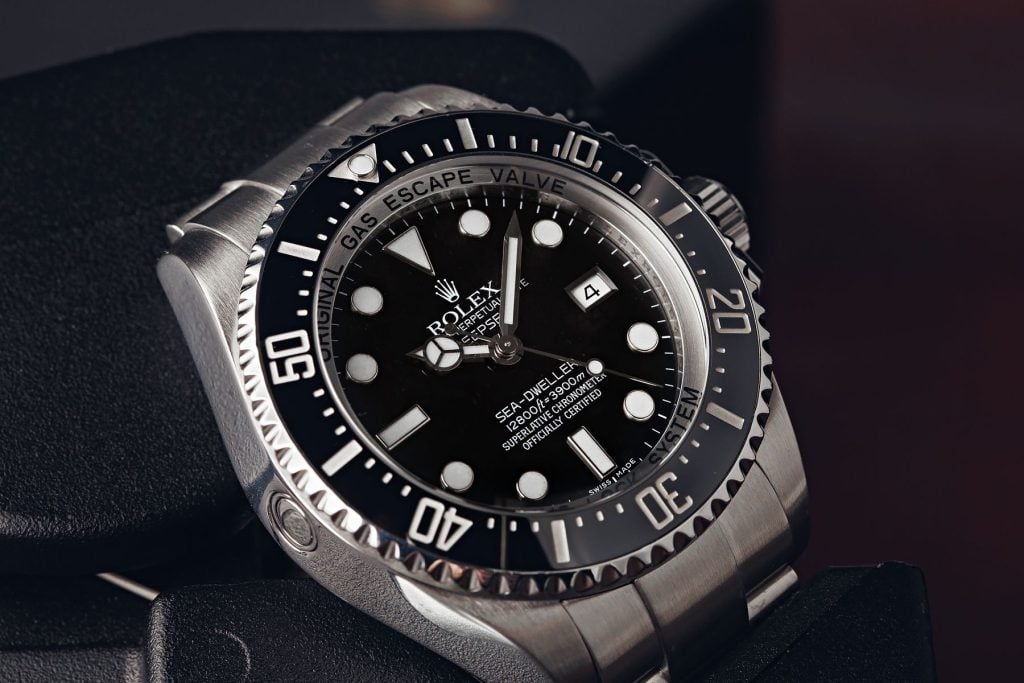
In terms of the best dive watches, the choice between the Submariner and the Sea-Dweller will likely come down to personal preference and how each watch looks on your wrist. The Sea-Dweller is undoubtedly the more substantial of the two, with a robustness that inspires unwavering confidence in its ability to withstand virtually anything, making it a strong contender in the Rolex Submariner vs Sea-Dweller comparison.
The Submariner, on the other hand, epitomizes the understated and versatile sports watch, one that seamlessly transitions from casual to formal settings without looking out of place. The recent return to its former slender profile has only enhanced its all-around versatility, solidifying its status as the quintessential beach-to-boardroom timepiece and a worthy opponent in the Sea-Dweller Rolex vs Submariner debate.
In terms of Rolex watch prices overall, these two Rolex dive watches are nearly identical, especially on the pre-owned market, which is essentially the only way to purchase them without enduring a lengthy waiting list. Although the initial investment may seem high, both watches are virtually guaranteed to retain their value over time.
Ultimately, there is no wrong choice in the Rolex Sea-Dweller vs Submariner debate. Our recommendation is to select the watch that most appeals to you and best fits your lifestyle. Whichever you choose, you can be confident that you own one of the finest dive watches available on the market today.
Additional Information
If you’re interested in exploring other Rolex dive watches beyond the Submariner and Sea-Dweller, be sure to visit our entire dive watch collection to discover the perfect timepiece for your underwater adventures.
If you’re interested in selling your Rolex Submariner or Sea-Dweller watch, visit our sell Submariner page or sell Sea-Dweller page for more information.
